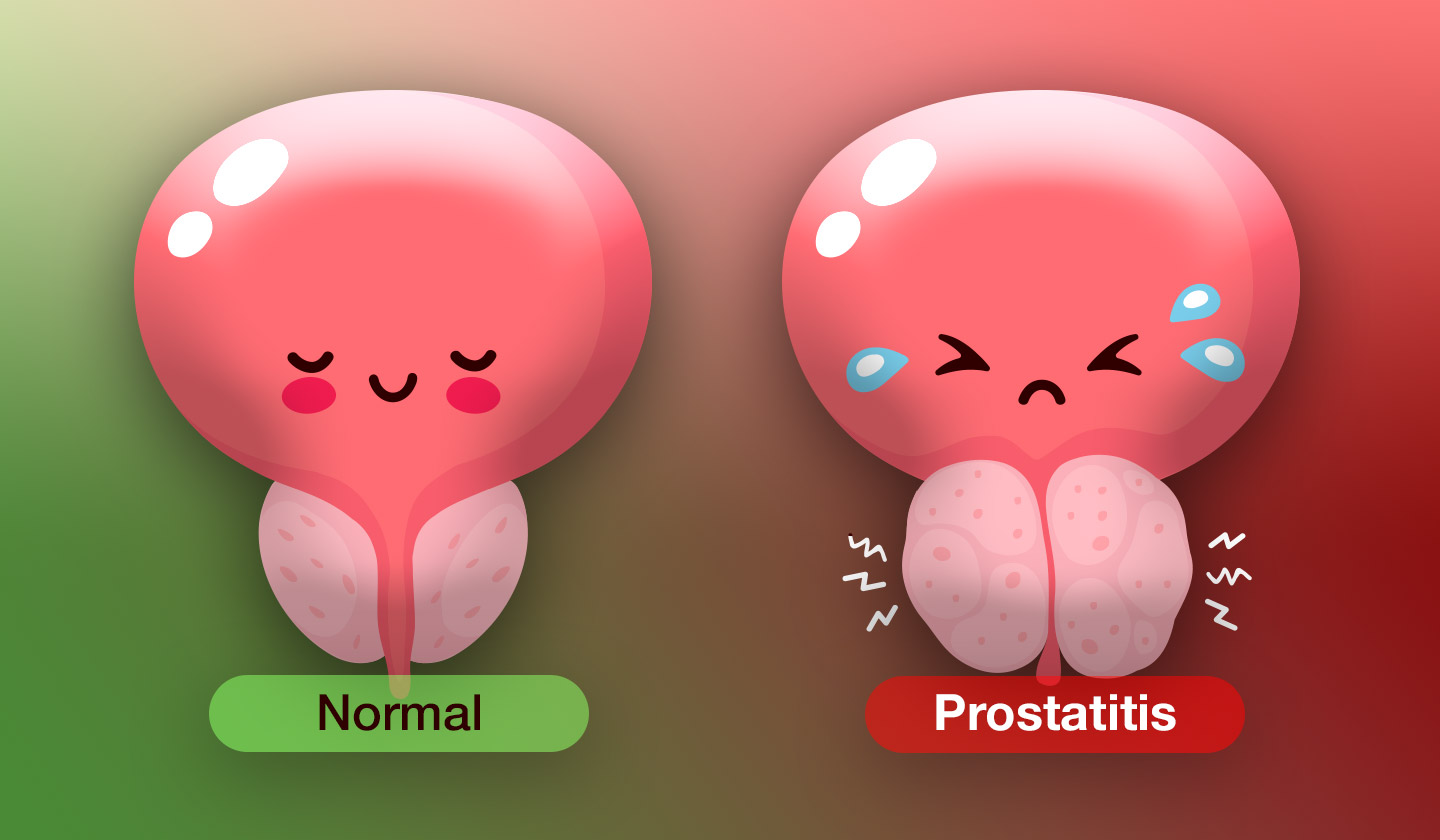Urinary tract
Prostatitis

Prostatitis is an inflammation and/or infection of the prostate, and is most commonly diagnosed in men under 50 years of age.
The clinical history and physical examination, including rectal examination, are the first approach to diagnose prostatitis. Following this evaluation, the physician may request other exams, namely: urinary sediment, urine culture, bacteriological analysis of the prostatic secretion, among others.
The can be classified into four categories: Acute Bacterial Prostatitis; Chronic Bacterial Prostatitis; Chronic Pelvic Pain Syndrome, Non-Bacterial Prostatitis and Asymptomatic Inflammatory Prostatitis.
Bacterial prostatitis, both acute and chronic, is not a contagious disease and is not considered a Sexually Transmitted Disease (STD).

Acute Bacterial Prostatitis
It is the least common prostate infection and affects mostly sexually active men between the ages of 20 and 40.
This prostatitis is the easiest to diagnose, because the symptoms are usually severe and have a sudden onset, including fever, urinary burning, and trembling. It is common for the patient to have irritative and obstructive urinary symptoms.
Acute bacterial prostatitis is caused primarily by microbial agents, and the most common cause is Escherichia coli, present in 65 to 80% of infections.
Less common are fungi or viruses that arise in immunosuppressed individuals.
The general physical examination reveals a flushed patient with fever, asthenia, vomiting, and nausea. On rectal touch, palpation of the prostate is extremely painful and warm.
To confirm the diagnosis complementary exams are performed, namely: urinary sediment, which should reveal leukocyturia and urine culture, to identify the bacterial agent.
Chronic Bacterial Prostatitis
Chronic prostatitis is a recurrent infection, usually caused by bacteria. Unlike acute infection, its symptoms are usually mild and may include frequent urination, burning, micturition pain, and perineal pain. Sometimes, the complaints can be summarized as repeated urinary infections. In this pathology the intensity of symptoms is not constant and periods of worsening alternate with asymptomatic periods.
The physical examination does not present relevant changes and the diagnosis is sometimes possible through urinary sedimentation and urine culture (two-sample test, in which urine is collected before and after prostatic massage, performed by rectal touch).
Chronic Pelvic Pain Syndrome
This syndrome has a clinical picture similar to that of chronic prostatitis, without associated urinary infection and often with sexual dysfunction (premature or painful ejaculation).
The exams usually performed, in a first approach, are: general physical examination, rectal touch and laboratory examination of urine.
Non-Bacterial Prostatitis
Non-Bacterial Prostatitis is the most common prostate inflammation and the simplest of prostatitis. This disease can appear in men at any age and develop into a chronic condition.
It can be caused by::
- Chlamydia trachomatis, Ureaplasma urealyticum, Trichomonas vaginalis
- stress
- physical activity, e.g. cycling
- structural abnormalities of the urinary tract, among others.
The symptoms are minimal and identical to those of chronic prostatitis. The urinary sediment and/or prostatic fluid reveals leukocyturia and the urine culture is negative.
Asymptomatic Inflammatory Prostatitis
The symptoms are absent or minimal, so it is most often diagnosed accidentally.

Symptoms
The symptoms depend on the type of prostatitis, and the patient may have severe and sudden symptoms or, on the contrary, have virtually no complaints.
When present, symptoms of prostatitis may include fever, chills, difficult urination, increased urination, painful or burning urination, perineal pain, abdominal pain, joint and muscle pain, blood in the urine, and painful ejaculation.
The symptoms of prostatitis can resemble the symptoms of other diseases, namely: acute or chronic urethritis, cystitis, bacterial infection of the bladder, hypertrophy, among others. Therefore, medical observation and complementary tests, such as urinary sedimentation and urine culture, are necessary to confirm the diagnosis.

Treatment
Treatment depends on the type of prostatitis. In acute infectious prostatitis, antibiotic and anti-inflammatory therapy is the recommended treatment, for a period of at least 14 days. Sometimes in the acute phase parenteral administration of the antibiotic may be necessary.
In chronic bacterial prostatitis the therapeutic option is the same, antibiotic therapy and anti-inflammatory drugs, but the duration of the antibiotic should be longer, between 4 and 12 weeks.
In chronic infection, antibiotics penetrate very poorly inside the prostate, so fat-soluble antibiotics are generally used. The selection of the antibiotic should be based on two criteria:
- Good penetration into the prostate
- Sensitivity of the infectious agent About 60% of patients respond to treatment. However, there are cases that do not respond to therapy, and a different regimen is usually used with low-dose antibiotics for a long period of time. Some cases may require surgical removal of the prostate.
When patients complain of micturition difficulty, alpha-blockers are used, which relax the prostatic muscle tissue and reduce micturition difficulty.
In non-bacterial prostatitis anti-inflammatory drugs and alpha-blockers can be used to reduce micturition difficulty and muscle relaxants to relax the muscles of the perineum.
To reduce the discomfort of the prostatitis patient, some measures are recommended, namely:
- semi-baths or sitz baths, in which the body is immersed from the thighs to the waist
- physical exercise, especially walking
- increased fluid intake
- diet without condiments (spices)
- avoidance of alcohol and coffee.
Sources
www.apurologia.pt
www.mayoclinic.com
www.uroweb.org
Também lhe poderá interessar
Urinary tract
Prostate Cancer
Urinary tract






